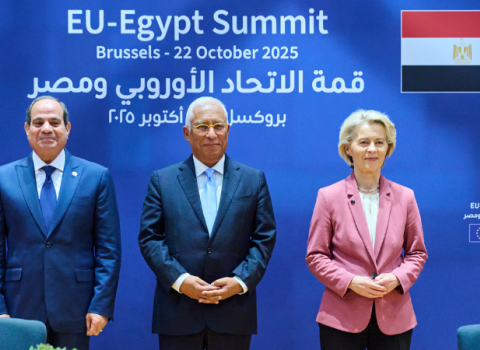The European Commission has given the go-ahead for the €700 million construction of three pan-European research infrastructures to support the biological sciences, funded by national governments and the EU.
In the first, France will coordinate the development of infrastructure for studying how ecosystems respond to environment and land-use change, while the UK will lead the on the creation of an infrastructure to integrate systems biology capabilities to promote applications in pharmaceuticals, healthcare and agriculture. The third new infrastructure, to be jointly handled by France and Germany, will build a reference collection of viruses, bacteria and fungi and make it available to scientists across Europe, for research on infectious diseases, crop pests and bio-security.
The projects are part of the updated Roadmap of the European Strategy Forum on Research Infrastructures (ESFRI), which is a list of the research facilities Europe needs to be globally competitive. All 48 infrastructures in the updated roadmap have been selected for being of pan-European interest and corresponding to the long-term needs of the European research communities, in all scientific areas, regardless of the possible location.
“Pooling national and EU resources to build pan-European research infrastructures – rather than each Member State simply going it alone – is common sense and a key part of the EU's Innovation Union plan,” said Máire Geoghegan-Quinn, European Commissioner for Research, Innovation and Science. “The biological science infrastructures ... can make a major contribution to tackling some of the toughest problems we face.”
The first ESFRI Roadmap was published in 2006, with an update two years later identifying gaps in the fields of energy and biological and medical sciences. The latest update, which includes the three biological sciences infrastructures as well as three energy infrastructure projects announced in November 2010, is likely to be the last for a while because ESFRI’s priority has switched to the implementation of as many infrastructures as possible. Of 48 listed in the roadmap, ten are being implemented and up to16 more expected to begin by the end of 2012.
At the same time as adding six new infrastructure projects, two others were removed from the updated ESFRI roadmap, in line with what Herve Pero, the European Commission’s head of unit for research infrastructures, told Science|Business in an interview in July 2010. The two projects to be struck off the list are PRINS (Pan-European Research Infrastructure for Nanostructures) and ERICON AB (Aurora Borealis).
Details of New Research Infrastructures
The Infrastructure for Analysis and Experimentation on Ecosystems (ANAEE), to be coordinated by France, aims to overcome the current fragmentation of ecosystem research in Europe and develop a coordinated set of experimental platforms to analyse, detect and forecast the responses of ecosystems to environmental changes, and to develop appropriate management techniques. The infrastructure, with estimated costs for preparation and construction of €210 million, will be in operation from 2015 onwards.
The Infrastructure for Systems Biology-Europe (ISBE), coordinated by the UK, aims to support the convergence of life sciences with information technology and system science. System biology will have applications in medicine, such as in the design of pharmaceuticals, as well as having an impact on agriculture, healthcare and the environment. ISBE will be in operation from 2017. The total construction cost is about €300 million.
The EU Microbial Resource Research Infrastructure (MIRRI), coordinated by France and based in France and Germany, will improve access to strains of viruses, bacteria and fungi. This will have a strong impact on research in the agricultural, food, healthcare and biotechnological sectors. Applications range from research on human, animal and crop pathogens to bio security. Operation of the infrastructure should start in 2014. The project will cost € 190 million.
New energy projects added to the list
The three new energy research infrastructures are a wind research facility in Denmark, a concentrated solar power installation in Spain and a nuclear research reactor in Belgium, with an overall investment of about €1.2 billion.
The WindScanner project in Denmark has the capacity to produce detailed maps of wind conditions at a wind farm covering several square kilometers, leading to more efficient, stronger and lighter wind turbines. The facility will be in operation from 2013 and costs will be between €45 million and € 60 million.
The solar research infrastructure EU-SOLARIS at the Advanced Technological Centre for Renewable Energy in Tabernas, Almeria, Spain, focuses on developing new technologies for concentrated solar power and has a construction cost of about €80 million.
The Belgian nuclear fission research infrastructure MYRRHA, in Mol, will carry out research into the reduction of radioactive nuclear waste. The detailed engineering design of the facility is scheduled to be completed in 2014. The total construction cost is approximately € 960 million.





 A unique international forum for public research organisations and companies to connect their external engagement with strategic interests around their R&D system.
A unique international forum for public research organisations and companies to connect their external engagement with strategic interests around their R&D system.